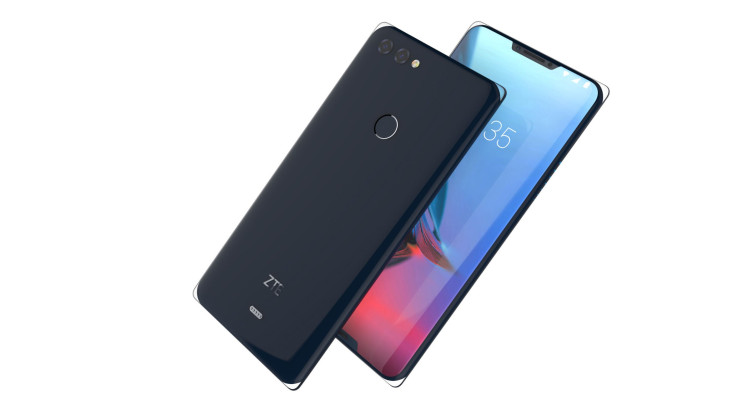ZTE Iceberg Concept Phone Features 2 Display Notches

Chinese phone maker ZTE has designed a concept phone that features two display notches. Called the ZTE “Iceberg,” the phone features an all-glass unibody construction and is up for an award under the “Product” discipline category at the iF Design Award 2018.
“The ZTE Iceberg uses a seamless glass connection technique to combine two pieces of glass as one unibody, which makes the phone resemble a fragment of ice,” the device’s description reads on the iF Design Award website. “The four corners of the phone are transparent to reveal the essential beauty of the glass material. The effect is beautiful and mysterious.”
Notches on displays are becoming more popular thanks to Apple’s iPhone X. However, the physical feature has started a debate on whether it’s a good design choice. As consumers argue over the notch, ZTE decided to place two notches on its latest concept phone. Regardless of what people think of display notches, ZTE’s Iceberg phone does look elegant. Also, having two notches instead of one gives the handset a symmetrical look, which is a bit more aesthetically pleasing.

The two notches on the display house front-facing speakers, which should be great for users who want a better listening experience when viewing content or playing games without headphones. The notch on top of the display also has the earpiece speaker and an array of front-facing sensors. On the back, the ZTE Iceberg has a circular rear-mounted fingerprint scanner and a set of dual cameras. It is also said to have support for wireless charging.
The bottom portion of the device’s back also appears to have a smart connector of some kind. Perhaps this would allow users to attach accessories to modify or add features to the handset. It’s possible that users could snap on a more powerful speaker or add a peripheral to take better photos and videos. It’s a bit reminiscent of Motorola’s Moto Mods connector for its Moto Z line of Android phones, as pointed out by The Verge.
The ZTE Iceberg is listed as having an “after 2018” launch date with a development time of 13-24 months. Needless to say, this phone won’t be coming out soon. The handset is also listed as having Asia, Europe and North America as its target regions. “Iceberg” may just be a codename for the device and it could be called something else if ZTE decides to manufacture and release the phone to consumers. Unfortunately, no information on any of its internal specs was shared.
© Copyright IBTimes 2024. All rights reserved.




















